In the world of food preparation and commercial cooking, the contact grill plant has emerged as a versatile and efficient solution for a variety of applications. This specialized equipment has revolutionized the way we think about grilling, offering a consistent and high-quality output that’s both time-saving and easy to clean. As we delve into the intricacies of these grill plants, it’s clear that they have become an integral part of numerous industries, from fast-food chains to gourmet restaurants, and beyond. Today, we explore the evolution of contact grill technology, highlighting its key features, diverse applications, and the critical role maintenance plays in ensuring safety and hygiene. Moreover, we look ahead to the future of contact grill plants in the food industry, where innovation and efficiency continue to shape the landscape of culinary excellence.
Introduction to Contact Grill Plants
Contact grill plants are a marvel of modern foodservice technology, designed to elevate the cooking experience for both commercial kitchens and home chefs alike. These innovative cooking appliances utilize direct heat to sear and grill food, creating those irresistible char marks and smoky flavors that make outdoor grilling a favorite among food enthusiasts.
In the heart of a contact grill plant, you’ll find a flat, heat-resistant surface that comes into direct contact with the food. This surface is typically made of cast iron or a similar durable material, ensuring it can withstand the intense heat required for perfect grilling. The design of these grills allows for even heat distribution, which is crucial for achieving consistent results every time.
The concept of contact grilling dates back to the early 20th century, but it has seen significant advancements over the years. Modern contact grill plants are equipped with various features that make them versatile tools in any kitchen. From small countertop models to large industrial units, these grills are used in a wide range of settings, from restaurants and hotels to catering services and even in some home kitchens.
One of the standout benefits of using a contact grill plant is the efficiency it brings to the cooking process. Unlike traditional grills that require constant monitoring and flipping of food, contact grills cook food from both sides simultaneously, reducing cooking times and allowing chefs to focus on other tasks. This dual-cooking capability is particularly beneficial for busy kitchens that need to serve large volumes of food quickly.
The heat generated by a contact grill plant is intense, but it’s also controllable. Many models come with adjustable temperature settings, allowing users to tailor the cooking process to the specific type of food they’re preparing. Whether you’re grilling a delicate piece of fish or a hearty steak, the ability to control the heat ensures that the food is cooked to perfection without overcooking or burning.
Another advantage of contact grilling is the ability to add moisture to the cooking process. Many contact grill plants have a built-in steam function that can be activated to keep food moist and tender. This feature is particularly useful when grilling lean proteins or vegetables, as it helps to prevent them from drying out.
The surface of a contact grill plant is not only designed for cooking but also for easy cleaning. The non-stick surfaces and sloped designs allow for quick and efficient draining of excess fats and juices, reducing the risk of flare-ups and making cleanup a breeze. This is a significant time-saver for busy kitchens that need to maintain high standards of cleanliness and hygiene.
In terms of design, modern contact grill plants are sleek and compact, making them a space-efficient addition to any kitchen. They can be mounted on countertops, placed on stands, or even integrated into larger cooking equipment. This flexibility allows for customization according to the kitchen’s layout and the chef’s preferences.
Contact grill plants are also known for their versatility. They can be used to cook a wide variety of foods, including meats, seafood, vegetables, and even sandwiches and pizzas. The even heat distribution ensures that each food item is cooked evenly, with no cold or undercooked spots.
In addition to their practicality, contact grills are also a favorite among chefs and home cooks for their ability to add a professional touch to dishes. The charred marks and grill lines that are characteristic of contact grilling are a visual and taste indicator of quality, making these grills a sought-after tool in any culinary arsenal.
Safety is another crucial aspect of contact grill plants. These units are designed with safety features such as cool-touch handles and surfaces, as well as overheat protection systems that automatically shut off the grill when it reaches unsafe temperatures. This not only prevents accidents but also extends the life of the appliance.
As the culinary world continues to evolve, so does the technology behind contact grill plants. Innovations such as digital temperature controls, programmable cooking modes, and integrated timers have made these appliances even more user-friendly and efficient. Chefs can now easily replicate complex grilling techniques with the touch of a button, making the art of grilling accessible to anyone with a passion for cooking.
In conclusion, contact grill plants have become an indispensable tool in the modern kitchen. Their ability to cook food quickly and evenly, their versatility, and their ease of use make them a favorite among professional chefs and home cooks. Whether you’re grilling a quick meal or preparing a large banquet, a contact grill plant is sure to enhance your cooking experience and elevate the quality of your dishes.
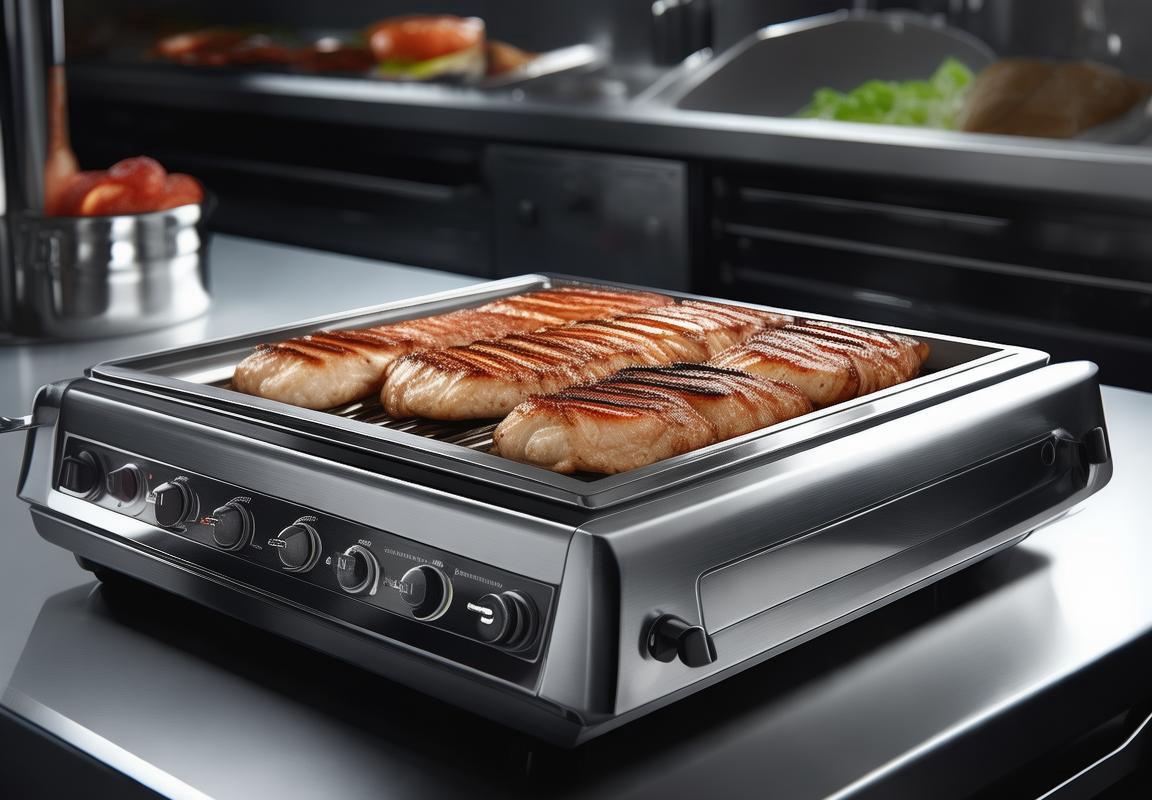
What is a Contact Grill Plant?
A contact grill plant, often referred to as a contact grill or grill press, is a specialized piece of equipment designed for cooking food by applying pressure and heat simultaneously. This method of cooking is particularly favored for its ability to create a distinctive grill pattern on the surface of meats, vegetables, and other food items. Here’s a closer look at what a contact grill plant entails:
Contact grill plants come in various sizes and configurations, ranging from small countertop models suitable for home use to large commercial units designed for busy restaurants and foodservice operations. These grills are characterized by their flat, heated surfaces that come into direct contact with the food, ensuring even cooking and a consistent texture.
The heart of a contact grill plant is its heating element, which can be electric or gas-powered. Electric models are generally more common due to their ease of use and the ability to maintain a consistent temperature. Gas-powered grills, on the other hand, offer a quick heat-up time and can be more energy-efficient in certain settings.
One of the defining features of a contact grill plant is its ability to sear food quickly. The high heat and pressure help to lock in flavors and create a caramelized crust on the surface of the food. This is especially beneficial for meats like steaks, burgers, and chicken, which can be cooked to perfection with minimal effort.
The cooking surface of a contact grill plant is typically made of a durable material such as cast iron, steel, or non-stick coatings. These surfaces are designed to withstand high temperatures and provide a non-slip grip for the food being cooked. The surface may also feature grooves or channels that mimic the look of a traditional grill, adding to the visual appeal of the finished dish.
In addition to the cooking surface, contact grill plants often come with a variety of accessories and features. These can include adjustable temperature controls, which allow for precise cooking temperatures, and a drip tray to catch any excess fat or juices that drip from the food. Some models also include a reversible cooking surface, which can switch between a flat grilling surface and a ribbed surface for a more authentic grill texture.
One of the standout benefits of using a contact grill plant is its versatility. It can be used to cook a wide range of foods, from sandwiches and wraps to vegetables and seafood. The even distribution of heat ensures that the food is cooked thoroughly without overcooking the edges or the center.
Another advantage is the efficiency of a contact grill plant. It requires less space than a traditional grill and can cook multiple items at once, making it an excellent choice for busy kitchens. The quick cooking time also means that you can serve meals faster, which is particularly beneficial during peak dining hours.
Despite their efficiency, contact grill plants are not without their limitations. The cooking surface is often smaller than that of a traditional grill, which means it may not be suitable for large quantities of food. Additionally, the direct contact with the heating element can sometimes result in a drier texture, so it’s important to keep an eye on the cooking time and consider adding moisture if necessary.
In terms of maintenance, contact grill plants are relatively easy to clean. The non-stick surfaces and removable drip trays make it simple to wipe down the cooking area after use. However, it’s crucial to follow the manufacturer’s instructions for cleaning and care to ensure the longevity of the equipment.
Contact grill plants also offer a range of health benefits. By cooking food at higher temperatures and applying pressure, the grill can help to lock in nutrients and reduce the need for added fats, making it a healthier option compared to deep-frying or other high-fat cooking methods.
In conclusion, a contact grill plant is a versatile and efficient piece of cooking equipment that can enhance the flavor and texture of a wide array of foods. Whether for personal use or commercial applications, its ability to sear, cook, and maintain temperature makes it a valuable addition to any kitchen.
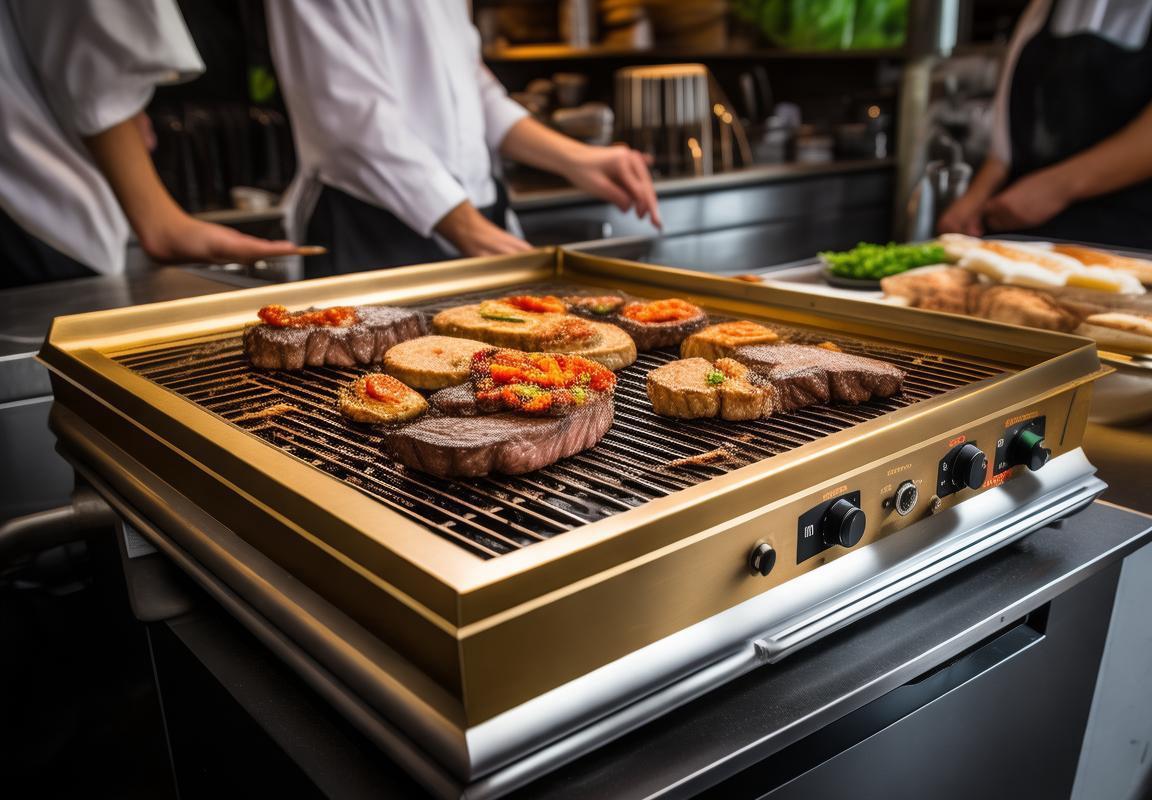
The Benefits of Using a Contact Grill Plant
Incorporating a contact grill plant into your food service or manufacturing operations offers a multitude of advantages that can enhance efficiency, quality, and customer satisfaction. Here’s a closer look at some of the key benefits:
The even distribution of heat is a cornerstone of a contact grill plant’s operation, leading to a more consistent and superior cooking result. Unlike open flame grills, which can sometimes cook unevenly, the direct contact with the grill surface ensures that every piece of food is cooked uniformly. This precision is especially beneficial for items that require a specific level of doneness or when cooking a variety of items simultaneously.
The speed at which contact grill plants can cook is remarkable. These machines are designed to efficiently sear food while locking in juices, which significantly reduces the cooking time. For businesses with high demand, this quick turnaround can mean shorter wait times for customers and increased productivity throughout the day.
A contact grill plant can be a significant time-saver for chefs and kitchen staff. The automated process reduces the need for constant monitoring and adjustments, allowing kitchen staff to focus on other tasks or to provide a higher level of service. This efficiency also helps in training new employees, as the consistent nature of contact grilling requires less experience to achieve high-quality results.
One of the most attractive features of a contact grill plant is its ability to enhance the flavor of food. The contact cooking method, with its direct heat, can caramelize the natural sugars in ingredients, creating a rich, appetizing taste that is often difficult to achieve with other cooking methods. This not only makes the final product more enjoyable but also can increase customer loyalty.
Safety is a top concern in any commercial kitchen, and contact grill plants are designed with this in mind. They often come equipped with safety features like automatic shut-offs and heat-resistant surfaces to prevent burns. This not only protects staff but also reduces the risk of kitchen fires, a critical aspect of maintaining a safe work environment.
Contact grill plants are also highly versatile. They can be used to cook a wide variety of foods, from steaks and chicken breasts to vegetables and even desserts. This flexibility allows businesses to offer a diverse menu without the need for multiple types of cooking equipment, which can save on space, energy, and maintenance costs.
The compact size of many contact grill plants makes them ideal for limited kitchen spaces. They can be placed on countertops or under cabinets, freeing up valuable floor space that can be used for other equipment or dining areas. This space efficiency is particularly advantageous in busy restaurants or cafes where every square inch counts.
The consistent quality of food cooked on a contact grill plant can help improve your business’s reputation. Consistency in taste and appearance can lead to more satisfied customers, which in turn can lead to repeat business and positive word-of-mouth referrals. For those looking to establish a brand known for excellence, a contact grill plant can be a valuable asset.
Maintaining a contact grill plant is relatively straightforward. Regular cleaning and occasional maintenance checks are usually all that’s required to keep the grill in optimal condition. This ease of maintenance means less downtime for repairs and more time focused on cooking delicious food.
Energy efficiency is another significant benefit of using a contact grill plant. These grills are designed to use heat effectively, minimizing energy consumption. In a world where sustainability is increasingly important, this can help businesses reduce their carbon footprint and lower their operational costs.
Lastly, a contact grill plant can be a great investment for those looking to upgrade their kitchen technology. With the ability to cook a variety of foods quickly and safely, these grills can improve the overall quality of service and enhance the customer experience. For any establishment that values culinary excellence and customer satisfaction, the benefits of a contact grill plant are clear and compelling.
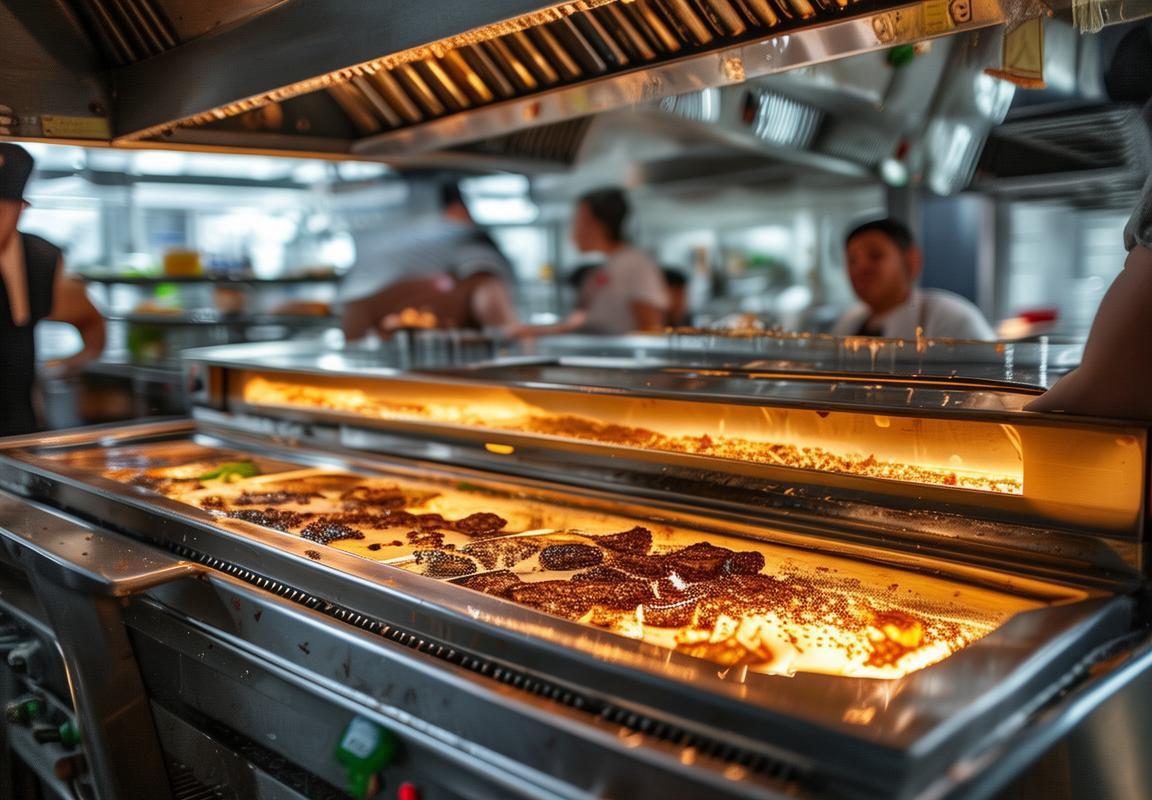
How a Contact Grill Plant Works
A contact grill plant, often referred to as a grill press or a flat-top grill, operates on a principle that combines the even distribution of heat with the pressure applied to the food. Here’s an in-depth look at how these versatile cooking systems work:
The Heat SourceAt the heart of a contact grill plant is a heat source, typically a series of heating elements that are evenly distributed across the grill’s surface. These elements can be electrically powered or gas-fueled, depending on the model. The heat source is designed to maintain a consistent temperature, ensuring that the food cooks evenly without burning or charring.
The Grill PlatesThe grill plates are the key components that come into direct contact with the food. They are usually made of cast iron or stainless steel due to their excellent heat retention and durability. The plates are flat and smooth on one side and have a textured surface on the other to mimic the grill marks that are characteristic of outdoor grilling.
The Pressure MechanismWhat sets a contact grill plant apart from a traditional grill is the pressure mechanism. The grill plates are designed to close tightly around the food, applying pressure as they heat up. This pressure helps to seal in the flavors and juices, creating a more intense and tender result. The pressure also aids in the cooking process by ensuring that the food is uniformly exposed to the heat.
The Cooking ProcessWhen you place food on the grill plates, the heat from the elements begins to cook the surface. The pressure from the closing plates helps to sear the food, locking in the natural flavors and creating a delicious crust. As the food cooks, the juices from the meat or vegetables are released and trapped by the pressure, preventing them from escaping and diluting the flavors.
The Even Heat DistributionOne of the most significant advantages of a contact grill plant is the even heat distribution. The flat surface and the uniform heating elements ensure that the food cooks evenly from edge to edge. This is particularly beneficial for larger cuts of meat, such as steaks or roasts, as it prevents the outer layers from becoming overcooked while the interior remains rare or medium rare.
The Temperature ControlModern contact grill plants often come with adjustable temperature controls. This allows the user to set the desired cooking temperature, which can range from low and slow for delicate foods to high and fast for searing. The temperature control is crucial for achieving the perfect doneness and texture.
The Non-Stick SurfaceMany contact grill plants are equipped with a non-stick surface, which makes it easier to cook and clean. The non-stick coating reduces the need for excessive oil or butter, which can add unnecessary calories and fat to the food. It also simplifies the cleaning process, as food particles are less likely to stick to the grill plates.
The Cooking CycleThe cooking cycle on a contact grill plant can vary depending on the type of food being cooked. For instance, a steak might require a few minutes of searing on each side at a high temperature, followed by a lower temperature to finish cooking through. Vegetables can be cooked quickly by placing them on the grill plates and adjusting the temperature accordingly.
The Safety FeaturesSafety is a priority in the design of contact grill plants. Many models include features like automatic shut-off timers, which turn off the grill after a certain period of inactivity to prevent overheating. Additionally, the grill plates are often designed with cool-touch handles and non-slip feet to ensure safe operation.
The VersatilityA contact grill plant is not just for cooking steaks and burgers. It can be used to grill vegetables, fish, and even sandwiches. The even heat and pressure make it possible to achieve a variety of cooking styles, from the classic grill marks to the perfect flat-top sear.
In conclusion, the contact grill plant works by utilizing a combination of even heat distribution, pressure, and precise temperature control to cook food to perfection. Its design allows for a wide range of cooking methods, making it a versatile and efficient tool in any kitchen.
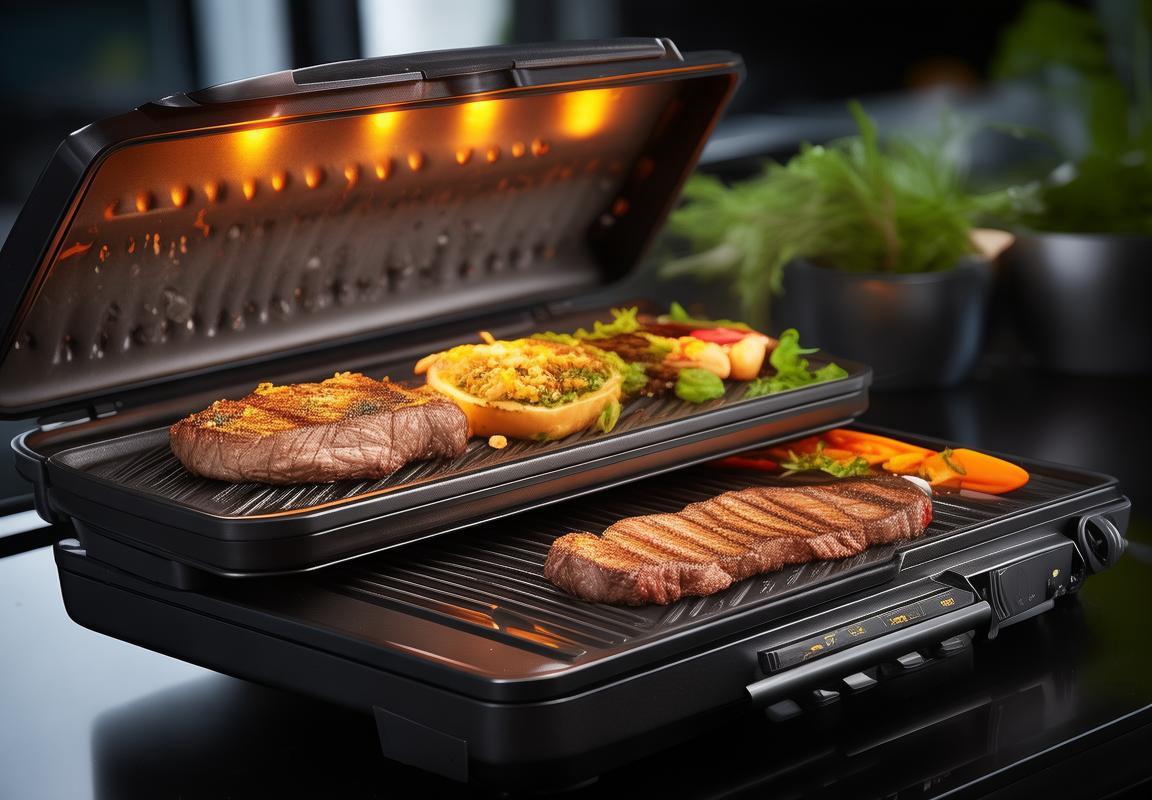
Key Features of Modern Contact Grill Plants
Modern contact grill plants are marvels of engineering, designed to enhance efficiency and output in various industries, particularly in the food processing sector. Here’s an in-depth look at some of their key features:
The heating elements are meticulously crafted, often made from high-quality stainless steel or other durable materials. These elements are designed to distribute heat evenly across the grill surface, ensuring consistent cooking temperatures. The precise engineering of these elements is crucial for maintaining the quality and taste of the food being cooked.
Advanced control systems are a hallmark of modern contact grill plants. These systems typically include programmable timers, adjustable temperature controls, and sometimes even automated cooking programs. Users can set the exact parameters for cooking, from the temperature to the duration, allowing for a high degree of control over the cooking process.
The design of modern contact grill plants often includes a spacious cooking area that can accommodate a variety of food products. These grills are designed to handle large volumes, with some models capable of cooking multiple batches simultaneously. The large surface area not only increases efficiency but also allows for a diverse range of products to be processed.
One of the standout features of modern contact grill plants is their ease of use. Many come equipped with intuitive interfaces, including digital displays and push-button controls. These user-friendly designs mean that operators can quickly adjust settings and begin cooking without the need for extensive training.
Safety features are a top priority in the design of contact grill plants. These features can include overheat protection, which automatically shuts off the grill if the temperature exceeds safe levels. Additionally, many models include non-slip surfaces and safety interlocks to prevent accidental activation or operation when the grill is not in use.
In terms of maintenance, modern contact grill plants are designed for ease and efficiency. The surfaces are typically made from materials that are easy to clean, and some models come with removable parts that simplify cleaning and maintenance tasks. Regular maintenance is crucial for ensuring the longevity and performance of the grill.
Energy efficiency is a significant consideration in the design of modern contact grill plants. These grills are engineered to minimize energy consumption without compromising cooking performance. Features like variable heat settings and insulation help maintain consistent temperatures while reducing energy use.
The construction of modern contact grill plants is often modular, allowing for easy installation and expansion. This modular design means that as businesses grow, they can add additional modules to their existing grills to increase capacity without the need for a complete overhaul.
The materials used in the construction of these plants are of the highest quality. From the stainless steel used for the cooking surfaces to the durable hinges and brackets, every component is designed to withstand the rigors of commercial use.
Modern contact grill plants are also designed with environmental considerations in mind. Many models are equipped with exhaust systems to remove smoke and grease, reducing the impact on the surrounding air quality. Additionally, the use of energy-efficient heating elements contributes to a smaller carbon footprint.
The durability of these grills is unparalleled. With robust construction and high-quality components, they are built to last, providing years of reliable service in commercial kitchens and food processing facilities.
Lastly, the versatility of modern contact grill plants cannot be overstated. Whether used for cooking burgers, steaks, or even vegetarian options, these grills can handle a wide array of foods, making them a versatile choice for any establishment that requires high-capacity grilling capabilities.
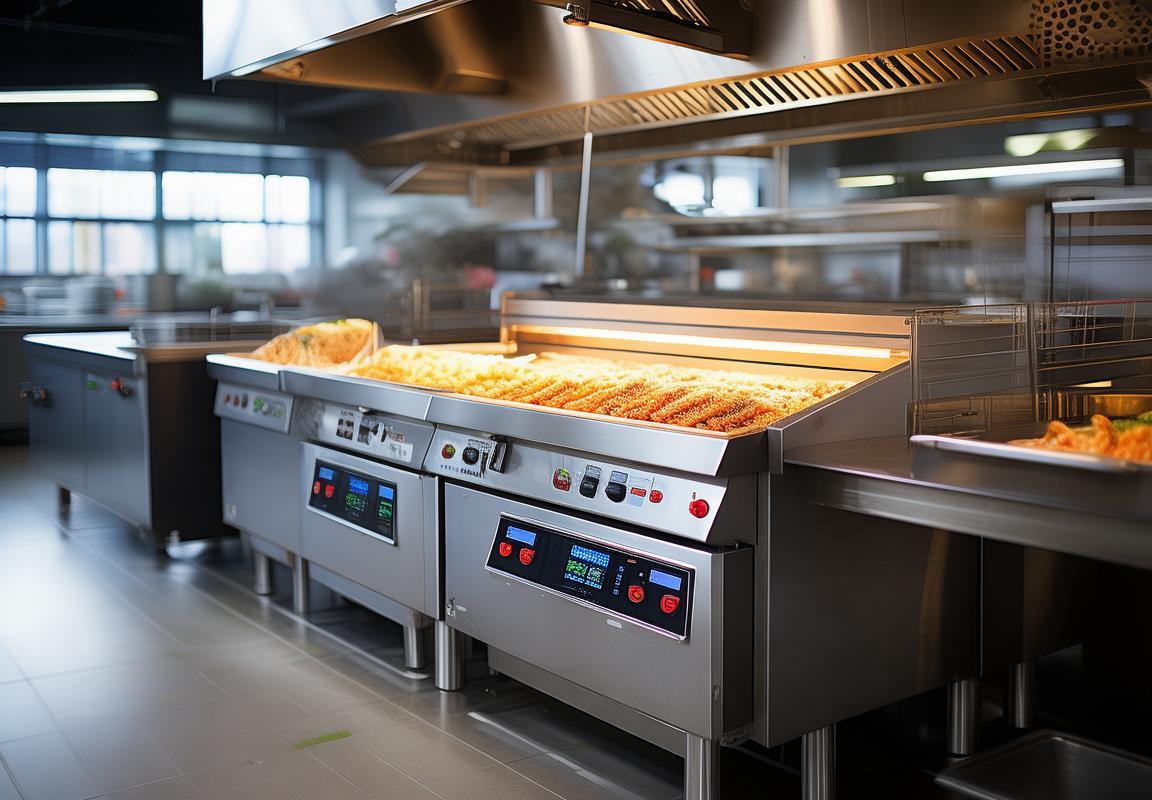
Applications of Contact Grill Plants in Different Industries
In the food industry, contact grill plants have become a staple for producing a wide range of delicious meats. However, their utility extends far beyond the culinary realm, finding applications in various sectors that benefit from even, consistent cooking. Here’s a closer look at some of the diverse uses of contact grill plants across different industries:
-
Food Service and HospitalityIn restaurants and hotels, contact grill plants are a game-changer for quick service. They allow for the cooking of steaks, burgers, and other grilled items simultaneously, reducing wait times and increasing customer satisfaction. Their ability to cook multiple portions at once is especially valuable in busy dining environments.
-
Catering and Event ServicesCatering companies rely on the efficiency and flexibility of contact grill plants for large events. These portable and robust machines can be set up almost anywhere, ensuring that guests can enjoy freshly grilled foods at outdoor weddings, corporate events, and festivals.
-
Food Processing FacilitiesIn food processing plants, contact grill plants are used for the production of pre-packaged and frozen grilled meats. The precision of the grilling process ensures that the final product retains the texture and flavor profile that consumers expect from grilled foods.
-
Retail and Convenience StoresSupermarkets and convenience stores often use contact grill plants to offer a variety of freshly grilled meats and sandwiches to customers. This feature not only attracts customers looking for a healthier alternative to fried foods but also adds an element of freshness and quality to their offerings.
-
Fast-Casual and Casual DiningFast-casual and casual dining establishments benefit from the versatility of contact grill plants. They can easily prepare a range of gourmet burgers, sandwiches, and salads, offering a higher-end dining experience at a quicker pace than traditional restaurants.
-
Healthcare FacilitiesIn healthcare settings, contact grill plants can be used to prepare nutritious and appealing meals for patients. These facilities often have dietary restrictions or preferences that require specialized cooking methods, and contact grilling provides a healthy and appetizing solution.
-
Recreational and CampsitesRecreational facilities and campsites can use portable contact grill plants to provide guests with a variety of grilled foods. These plants are designed to be used outdoors and can be a hit with campers and festival-goers looking for a taste of home-cooked meals away from home.
-
Military and Emergency ServicesThe military and emergency services often require reliable cooking solutions in remote locations. Contact grill plants offer a convenient and efficient way to cook large quantities of food under challenging conditions, ensuring that personnel have access to well-cooked meals.
-
Agricultural ProcessingIn the agricultural sector, contact grill plants can be used to process and add value to meat products from livestock. This can be particularly beneficial for smaller farms or producers looking to enhance their product offerings.
-
Hobbyist and Home CookingFor hobbyists and home chefs, contact grill plants offer a professional-grade cooking experience. These plants can be used to experiment with different recipes and techniques, allowing enthusiasts to bring the taste of a commercial grill to their own kitchens.
The applications of contact grill plants are vast and continue to grow as technology advances. Their ability to provide consistent, high-quality cooking in a variety of settings makes them a valuable asset to industries looking to offer their customers the convenience and taste of a grilled meal.
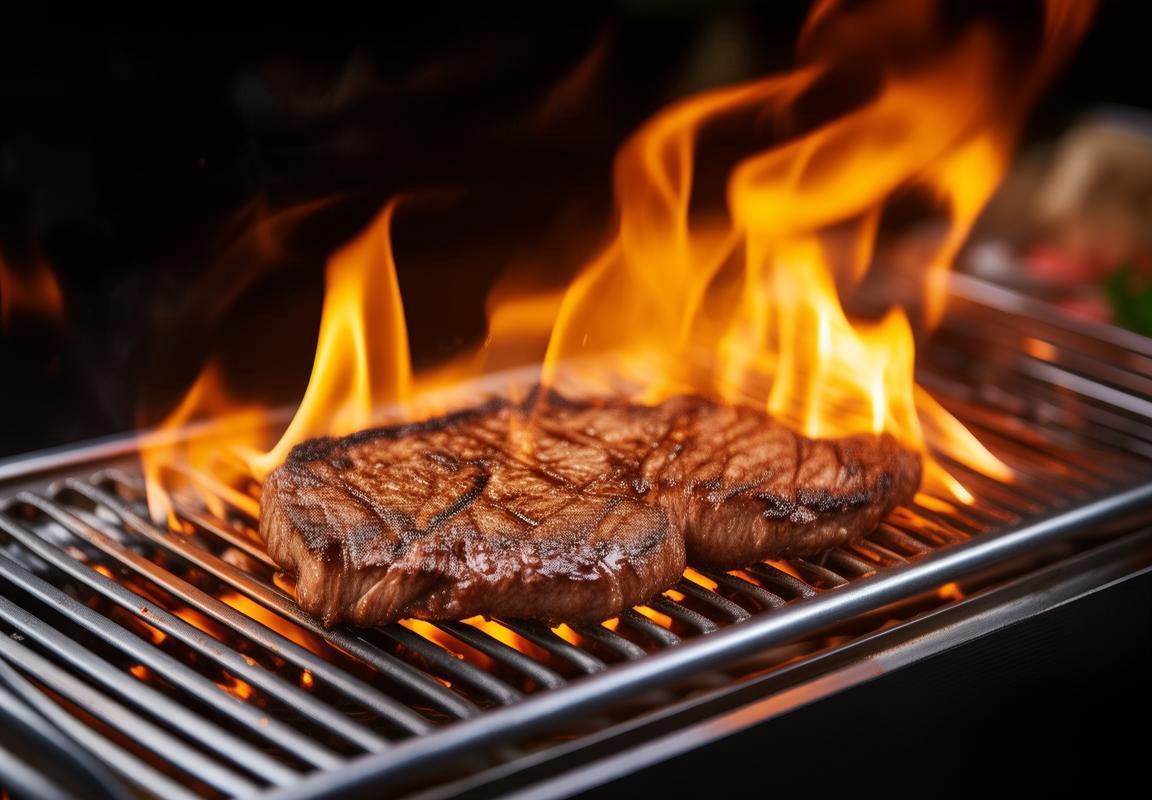
The Importance of Maintenance for Contact Grill Plants
In the world of industrial food processing, the efficiency and longevity of equipment are paramount. One such piece of equipment that stands out is the contact grill plant. These versatile machines are not just about cooking; they are integral to various industries, and their maintenance is a critical factor in their performance and lifespan. Here’s a closer look at why maintenance is so important for contact grill plants:
The Heat of EfficiencyContact grill plants are designed to cook food quickly and evenly, thanks to their high-temperature surfaces. This efficiency is crucial in high-volume food production, but it also means that the equipment is subjected to intense heat and pressure. Regular maintenance ensures that the heat exchangers, which are the heart of these grills, operate at peak performance, reducing energy consumption and extending the life of the grill.
Preventing DowntimeA contact grill plant can be a cornerstone of a food production line. When it’s down, so is the entire operation. Maintenance schedules help identify and address potential issues before they become major problems, thus minimizing downtime. This proactive approach saves both time and money, as the cost of a sudden breakdown can be far greater than the cost of regular maintenance.
Safety FirstSafety is paramount in any industrial setting, and contact grill plants are no exception. These machines can reach extreme temperatures, and any malfunction can lead to burns or fires. Regular maintenance checks the integrity of the equipment, including the electrical systems, gas lines, and heat-resistant materials, ensuring that they are all in safe working order.
Preserving Food QualityThe quality of the food being cooked on a contact grill plant is directly tied to the performance of the equipment. Regular cleaning and maintenance prevent buildup of residue and ensure that the grill’s surface remains smooth and non-stick. This not only improves the taste and appearance of the food but also maintains the brand reputation for those businesses that rely on these grills to produce their products.
Cost Savings Over TimeWhile it might seem counterintuitive, investing in regular maintenance can actually save money in the long run. By catching and fixing small issues early, you avoid the costly repairs that come with major breakdowns. Additionally, well-maintained equipment operates more efficiently, which can lead to lower energy bills and a reduction in waste.
Longevity of ComponentsThe components of a contact grill plant, such as the heating elements, hinges, and control systems, are designed to last for many years. However, without proper care, these parts can degrade more quickly. Regular maintenance includes lubricating moving parts, inspecting electrical connections, and replacing worn-out components, all of which contribute to the overall longevity of the grill.
Regulatory ComplianceMany industries are subject to stringent health and safety regulations. Regular maintenance of a contact grill plant not only ensures that the equipment meets these standards but also provides documented evidence of compliance. This can be crucial during audits or inspections, avoiding fines and legal issues.
Expertise and TrainingThe staff operating and maintaining contact grill plants need to be well-trained. Regular maintenance not only keeps the equipment running smoothly but also provides an opportunity for the operators to receive ongoing training. This ensures that they are up-to-date with the latest safety protocols and operational best practices.
In conclusion, the importance of maintenance for contact grill plants cannot be overstated. It’s not just about keeping the equipment running; it’s about ensuring safety, preserving food quality, saving costs, and maintaining compliance with industry regulations. By investing in regular maintenance, businesses can extend the life of their contact grill plants and ensure they continue to be a reliable asset in their operations.
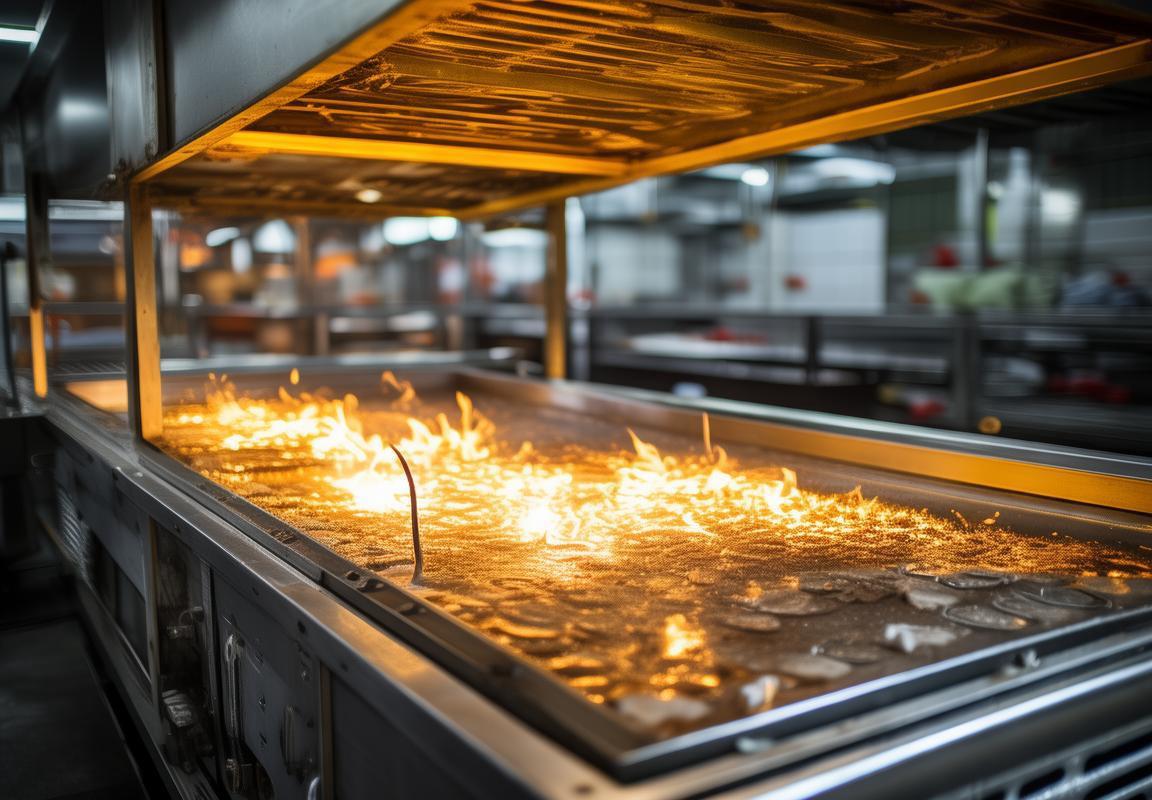
Safety and Hygiene Standards in Contact Grill Plant Operation
In the operation of contact grill plants, ensuring safety and maintaining high hygiene standards is paramount. These factors not only protect the health of consumers but also uphold the reputation and integrity of the business. Here’s a detailed look at the importance of adhering to safety and hygiene standards in contact grill plant operations:
The precise control of heat is critical in contact grill plants, as it directly impacts the quality and safety of the final product. Overheating can lead to burns on the food surface, while undercooking can result in foodborne illnesses. Regular calibration of the grill plates ensures that the heat is distributed evenly, reducing the risk of these issues.
Cleanliness is the cornerstone of any food processing facility, and contact grill plants are no exception. The surfaces of the grill plates are in direct contact with food, making them a prime area for bacteria and contaminants to thrive. Strict cleaning protocols, including high-pressure water sprays and sanitizing solutions, are essential to eliminate these risks.
Food safety regulations often require the use of non-reactive materials in contact with food. In contact grill plants, this means using stainless steel or other food-grade materials for the grill plates and surrounding equipment. These materials are less likely to leach harmful substances into the food, ensuring that the end product is safe for consumption.
Hygiene in the workplace is equally important. Employees must be trained to follow proper hand-washing procedures before and after handling food. The use of gloves and hairnets is also standard practice to prevent cross-contamination. Regular health checks and training sessions help maintain a culture of cleanliness and safety.
The ventilation system in a contact grill plant is crucial for expelling smoke, steam, and odors that can accumulate during cooking. Without adequate ventilation, these elements can lead to a buildup of harmful substances and compromise air quality. Ensuring that the ventilation system is well-maintained and functioning properly is a key aspect of maintaining a safe working environment.
Fire safety is another critical consideration. Contact grill plants often use large amounts of oil, which can pose a significant fire risk. Regular fire extinguisher checks, the installation of smoke detectors, and emergency exit drills are all part of a comprehensive fire safety plan. Employees should also be trained on how to respond to a fire to minimize damage and protect lives.
In some regions, environmental regulations may dictate the handling and disposal of fats, oils, and grease (FOG). Properly managing FOG is essential to prevent clogs in the plumbing system and to ensure that it doesn’t contaminate water sources. This often involves the use of separators and the hiring of specialized waste management services.
The design of a contact grill plant can also contribute to safety and hygiene. For instance, the layout should allow for easy cleaning and maintenance. Walkways should be clear and well-lit, and equipment should be designed to minimize the risk of accidents, such as sharp edges or moving parts that could cause injury.
Regular audits and inspections by regulatory agencies are a standard part of operation in the food industry. These audits can uncover potential safety and hygiene issues that may not be immediately apparent. Adhering to the findings of these audits and staying up-to-date with the latest regulations is vital for maintaining compliance.
In the realm of technology, contact grill plants are increasingly integrating smart systems that can monitor and control various aspects of the cooking process. These systems can alert operators to potential problems before they become significant, such as a grill plate that’s heating unevenly or a ventilation system that’s underperforming.
Lastly, the role of management in setting and enforcing safety and hygiene standards cannot be overstated. Management must lead by example, ensuring that employees are aware of the importance of these standards and that they have the necessary resources to implement them effectively.
In summary, the operation of contact grill plants demands a vigilant approach to safety and hygiene. From the materials used in the grills to the training of employees, every aspect of the operation must be carefully managed to protect the health of consumers and maintain the integrity of the foodservice industry.
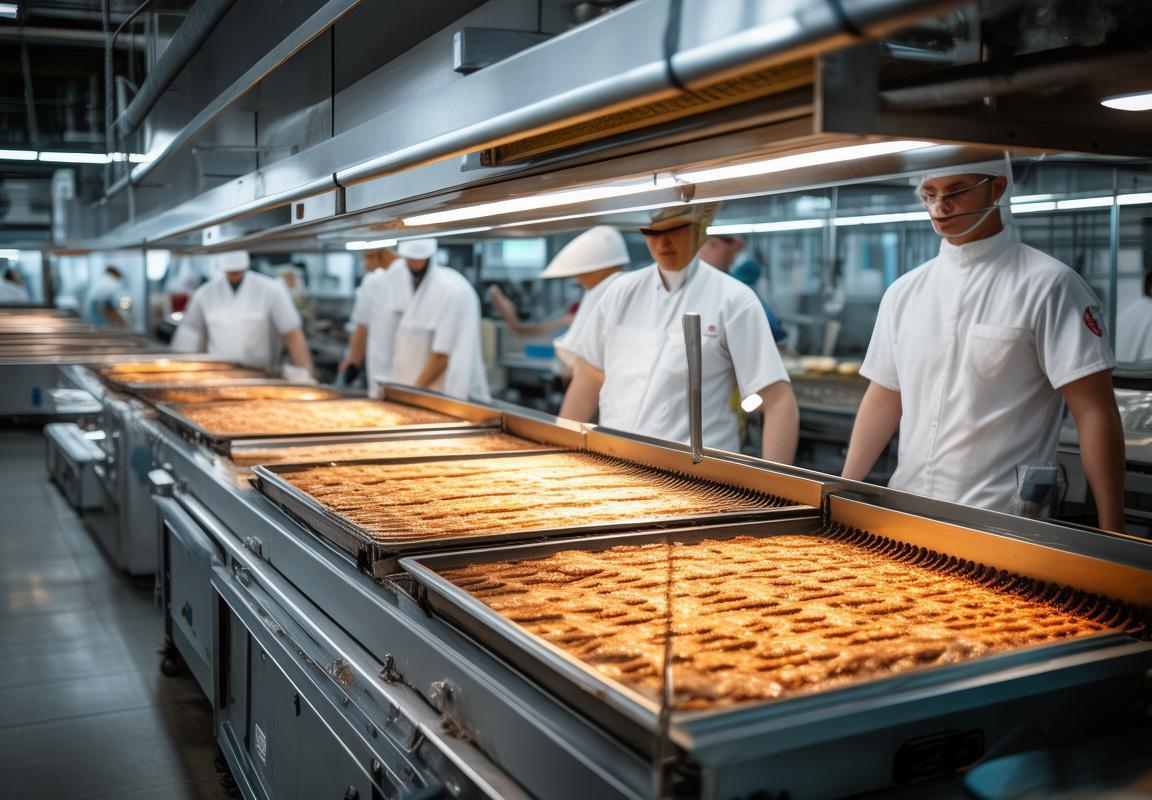
Innovations in Contact Grill Technology
In recent years, the contact grill technology has seen a surge of innovations, transforming the way we cook and the quality of the food we enjoy. From advanced heat distribution to smart control systems, these innovations are reshaping the landscape of the contact grill industry.
Grill plates that mimic the perfect sear. One of the most significant innovations in contact grill technology is the development of grill plates that can achieve a consistent and professional-grade sear. These plates are designed with intricate patterns and grooves that trap juices and fats, preventing them from escaping and enhancing the flavor of the food. The result is a more even cook and a beautifully caramelized crust on meats and vegetables.
Smart temperature control systems. Modern contact grill plants are equipped with sophisticated temperature control systems that allow for precise and consistent cooking. These systems often include digital displays and programmable settings, making it easier for chefs and home cooks to achieve the perfect temperature for different types of food. Some models even come with Bluetooth connectivity, allowing users to control the grill remotely via a smartphone app.
Improved heat efficiency. Efficiency is a key concern in any cooking equipment, and contact grill technology has made significant strides in this area. Newer models feature advanced heat distribution systems that minimize hotspots and cold spots, ensuring that food is cooked evenly throughout. This not only saves energy but also reduces the risk of undercooked or overcooked food.
Non-stick surfaces and easy cleaning. The struggle with cleaning cookware is a common issue for many, and contact grill technology has responded with non-stick surfaces that make cleanup a breeze. These surfaces are designed to withstand high temperatures and are easy to maintain, reducing the need for harsh chemicals and time-consuming scrubbing.
Variable cooking modes. To cater to a wide range of cooking styles and preferences, modern contact grill plants often offer multiple cooking modes. These can include direct grilling, indirect grilling, searing, smoking, and even baking. The ability to switch between these modes provides versatility and allows for a wider variety of recipes to be prepared on the same appliance.
Automated cooking processes. For those who prefer convenience, contact grill technology has introduced automated cooking processes. Some models can automatically open and close the lid, adjust the temperature, and even flip the food for even cooking. This hands-off approach not only saves time but also reduces the risk of burns and accidents.
Enhanced durability. With the demand for more durable appliances, contact grill technology has evolved to include materials and construction techniques that increase longevity. Stainless steel and aluminum are commonly used for their heat resistance and durability, ensuring that the grill can withstand the rigors of daily use.
User-friendly design. Modern contact grill plants are not just about performance; they are also designed with the user in mind. Ergonomic handles, easy-to-read displays, and intuitive interfaces make operation straightforward, even for those who are new to grilling. The inclusion of safety features like cool-to-the-touch surfaces and child locks adds an extra layer of peace of mind.
Innovative cooking accessories. To further expand the capabilities of contact grill plants, manufacturers have introduced a range of accessories. These can include additional grill plates for different cooking styles, drip pans to catch excess fats and juices, and even built-in smokers for those who enjoy the taste of smoked food.
The integration of IoT (Internet of Things). The latest contact grill technology is starting to integrate with the IoT, allowing for even more advanced features. Imagine being able to monitor and control your grill from anywhere in the world, or receiving notifications when your food is ready. These innovations are pushing the boundaries of what we expect from kitchen appliances.
The continuous evolution of contact grill technology is a testament to the industry’s commitment to improving the cooking experience. From the smallest detail to the most sophisticated features, these innovations are making contact grill plants not just a staple in commercial kitchens but also a favorite in home kitchens around the globe.
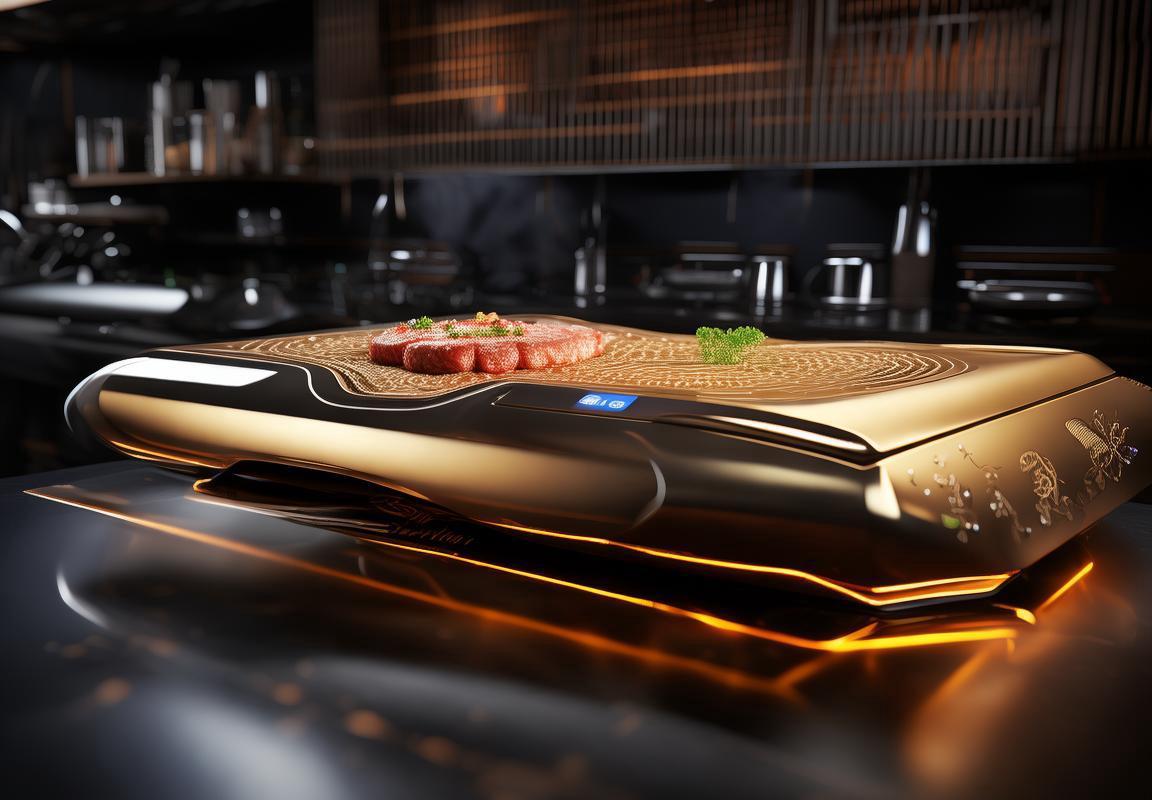
The Future of Contact Grill Plants in the Food Industry
In recent years, the food industry has witnessed a surge in the adoption of contact grill plants, thanks to their versatility and efficiency. These advanced cooking systems are not just limited to traditional grilling; they are revolutionizing how food is prepared across various sectors. Let’s delve into the future of contact grill plants in the food industry, exploring the trends and potential developments that lie ahead.
The integration of smart technology has paved the way for contact grill plants to become more intuitive and responsive to the needs of chefs and food service operators. From automated temperature control to predictive maintenance, here are some of the innovations that are shaping the future of contact grill technology:
-
Smart Sensors and IoT Integration: Contact grill plants are increasingly being equipped with smart sensors that can monitor cooking conditions in real-time. These sensors, often part of the Internet of Things (IoT), provide data that can be used to optimize cooking processes, ensuring consistency and quality across multiple units.
-
Automated Temperature and Time Control: Modern contact grill plants often come with advanced controls that can automatically adjust the temperature and cooking time based on the type of food being prepared. This not only saves time for chefs but also guarantees that each dish meets the desired level of doneness.
-
Energy Efficiency: With the rising cost of energy, contact grill plants are being designed to be more energy-efficient. Features like eco-friendly modes and adaptive power consumption ensure that operations are not only cost-effective but also environmentally sustainable.
-
Customizable Cooking Profiles: The ability to program and save multiple cooking profiles is a game-changer for foodservice operators. This allows for a variety of dishes to be prepared with minimal adjustments to the grill settings, increasing productivity and reducing training time for staff.
-
Sustainability and Food Safety: Innovations in contact grill technology are also focusing on sustainability and food safety. New materials are being used in grill plates to reduce heat loss and improve heat distribution, while advanced cleaning systems ensure that the equipment can be sanitized effectively, minimizing the risk of cross-contamination.
-
Integration with Kitchen Management Systems: The future of contact grill plants will likely see more seamless integration with kitchen management systems. This means that these grills can be controlled and monitored remotely, providing data analytics that can inform inventory management, menu planning, and customer service.
-
Augmented Reality (AR) for Training: AR technology could become a staple in the training of kitchen staff. By overlaying digital information onto the grill, operators can learn how to use the equipment more efficiently, reducing the learning curve and improving safety.
-
Health and Wellness Focus: As consumer awareness of health and wellness grows, contact grill plants may see innovations that cater to these trends. Features like programmable cooking temperatures to ensure lower fat content, or even the ability to cook with healthier cooking oils, could become standard.
-
Customization for Specific Markets: The future may see contact grill plants being tailored to specific regional markets. This could involve adapting to local culinary preferences, dietary restrictions, or even climate conditions, ensuring that the equipment is not only versatile but also culturally relevant.
-
Remote Monitoring and Service: With the advent of cloud computing, contact grill plants could offer remote monitoring services. This would allow manufacturers to diagnose issues, provide updates, and offer maintenance tips without the need for physical site visits, saving time and resources.
The future of contact grill plants in the food industry is bright, with a focus on innovation that enhances efficiency, sustainability, and the overall dining experience. As technology continues to evolve, these grills are poised to become even more integral to the culinary landscape, offering solutions that cater to both the demands of the consumer and the operational needs of the industry.